Decoding Price Action: A Comprehensive Guide to Support and Resistance
Welcome to our exploration of one of the most foundational concepts in technical analysis: Support and Resistance. If you’re new to trading, or even if you have some experience but want to deepen your understanding of how markets move, mastering Support and Resistance is absolutely crucial. Think of it as learning the fundamental laws of physics before you build a bridge or design an airplane. Without these basics, your structure might crumble.
In the world of financial markets, prices don’t just move randomly. While sometimes it might feel that way, there’s an underlying logic influenced by the collective behavior of millions of participants. This collective behavior often creates identifiable patterns and levels where prices tend to pause, reverse, or accelerate. These crucial levels are what we call Support and Resistance.
Throughout this guide, we will embark on a journey together. We will define what Support and Resistance truly mean, delve into the psychological forces that give them power, teach you practical methods for identifying them on your charts, and most importantly, show you how to use them to make informed trading decisions, manage risk, and potentially improve your profitability. We’ll use a friendly, step-by-step approach, much like a teacher guiding you through a complex subject, breaking down difficult ideas into understandable pieces. Are you ready to build a robust foundation for your technical trading?
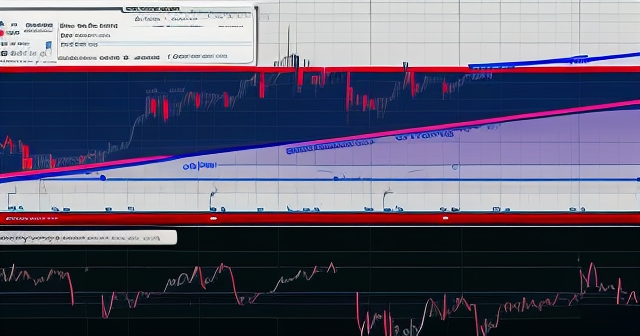
Let’s start with the absolute basics. What are Support and Resistance? In simple terms, they are price levels or zones on a chart where historical price action suggests that buying or selling pressure is likely to be strong enough to cause a temporary halt or reversal in the prevailing trend.
Imagine price is like a ball bouncing within a room. The floor of the room is your Support. When the ball hits the floor, it tends to stop falling and bounce back up. Similarly, a Support level is a price point where the concentration of buying interest (demand) is strong enough to overcome the selling pressure (supply), causing a price decline to slow down or reverse upwards. It’s a price floor that buyers are willing to defend.
Now, imagine the ceiling of that same room. The ceiling is your Resistance. When the ball hits the ceiling, it tends to stop rising and fall back down. A Resistance level is the opposite of Support. It’s a price point where the concentration of selling interest (supply) is strong enough to overcome the buying pressure (demand), causing a price increase to slow down or reverse downwards. It’s a price ceiling that sellers are likely to defend.
Here are some additional key points to understand about Support and Resistance:
- Support levels often trigger buying activity from traders who see the price as a bargain.
- Resistance levels can induce selling activity, as traders may perceive the price as overvalued.
- Both levels can change over time as they are influenced by new market information and trader sentiment.
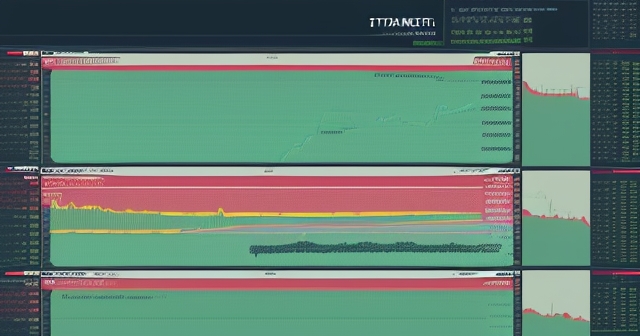
Why do these levels form? At Support levels, many traders who previously sold might look to buy back to cover their positions, while new buyers might enter the market, seeing the price as relatively cheap. This influx of buying power increases demand. At Resistance levels, traders who previously bought might look to sell to take profits, and new sellers might short the market, seeing the price as relatively expensive. This influx of selling power increases supply.
It’s important to understand that Support and Resistance are rarely exact lines. They are often better viewed as zones or areas rather than precise points. Think of it like the floor or ceiling not being perfectly flat. Price might dip slightly below Support or peek slightly above Resistance before reversing. This is why experienced traders often draw these levels as horizontal zones on their charts, accounting for the minor fluctuations and wicks (shadows) of candlesticks.
These fundamental concepts of supply and demand interacting at specific price points are the bedrock upon which many technical analysis strategies are built. Recognizing these areas helps you understand potential turning points in the market.
Identifying Key Support and Resistance Zones on Charts
Now that we know what Support and Resistance are, how do we find them on a price chart? Identifying these key levels is more of an art than a precise science, but there are several reliable methods we can use. The goal is to locate areas where price has historically struggled to move past.
The most common way to identify Support and Resistance is by looking at historical price charts. You want to find points where price has previously:
- Reversed its direction significantly.
- Paused or consolidated for a period before continuing.
- Tested a level multiple times without a decisive breakthrough.
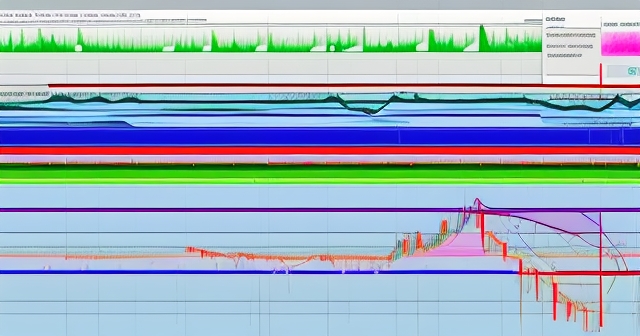
Let’s break down some specific methods:
-
Previous Swing Highs and Lows: These are arguably the most significant Support and Resistance levels. A swing high is a peak where an uptrend reversed downwards. A swing low is a valley where a downtrend reversed upwards. Connect these historical peaks and valleys with horizontal lines or zones. These represent points where strong selling (at highs) or buying (at lows) pressure previously dominated, and these memories tend to persist in the market’s collective psychology.
-
Horizontal Consolidation Areas: When price moves sideways in a relatively tight range for a significant period, the top of that range often acts as Resistance, and the bottom acts as Support. This period represents a balance between buyers and sellers, and a break out of this range can be significant.
-
Round Numbers: Psychologically significant numbers like 1.1000 in EUR/USD, $100 or $1000 for a stock, or $2000 for Gold, often act as Support or Resistance. Traders tend to place orders at these easy-to-remember levels, creating self-fulfilling prophecies of supply or demand accumulation.
-
Trendlines: While horizontal lines show static levels, trendlines provide dynamic Support or Resistance. In an uptrend, an upward-sloping line connecting swing lows can act as dynamic Support. Price tends to bounce off this line. In a downtrend, a downward-sloping line connecting swing highs can act as dynamic Resistance. Price tends to fall away from this line. We’ll discuss combining S&R with trendlines later.
-
Technical Indicators: Some indicators, like Moving Averages (MA) or Pivot Points, automatically calculate or represent potential Support and Resistance levels. For example, a commonly watched Moving Average (like the 50-period or 200-period MA) often acts as dynamic Support in an uptrend or Resistance in a downtrend.
When identifying these levels, look for confluence – areas where multiple indicators or methods suggest Support or Resistance at the same price point. A level that was a previous swing high, coincides with a round number, and is near a key Moving Average is likely to be much stronger than a level based on just one factor.
Here is a concise summary of common methods used to identify Support and Resistance:
| Method | Description |
|---|---|
| Previous Swing Highs and Lows | Identifies key peaks and valleys in price action to determine where buying or selling pressure has previously dominated. |
| Horizontal Consolidation Areas | Recognizes periods of price stability, where breakout can indicate strong Support or Resistance. |
| Round Numbers | Utilizes psychologically significant price levels where traders frequently place orders. |
| Trendlines | Incorporates dynamic levels by connecting swing highs or lows, providing context to current price action. |
| Technical Indicators | Employs indicators like Moving Averages and Pivot Points to visualize potential Support and Resistance levels. |
Remember, the more times a price level has been tested and held (i.e., price reversed at or near it) without breaking through, the stronger that Support or Resistance level is considered to be. These levels hold significant historical weight.
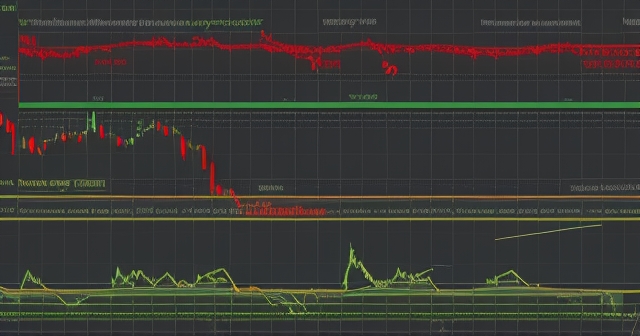
Why do these seemingly arbitrary price levels have such a profound effect on market movement? The answer lies deep within market psychology and behavioral finance. Support and Resistance levels are not just lines on a chart; they are manifestations of the collective beliefs, memories, and emotions of market participants.
Consider a stock price falling towards a level that was a significant low six months ago (a historical Support level). What happens in traders’ minds?
- Those who bought near that low before and saw the price rise remember it as a good buying opportunity. They might be inclined to buy again.
- Those who sold near the high before the price fell to this level might now see this as a potential area to cover their short positions by buying, locking in profits.
- Traders who missed the previous rally from this low might see it as a second chance to get in at a “cheap” price.
- Traders who have been selling during the decline might place their stop-loss orders just below this visible Support level to limit their potential losses if the price bounces.
All these actions involve buying near the Support level, collectively increasing demand and potentially causing the price to bounce.
The same logic applies to Resistance. As a price rises towards a previous peak (a historical Resistance level):
- Those who bought earlier and are now in profit might decide this is a good place to sell and take those profits off the table.
- Those who sold short near that high before and saw the price fall remember it as a profitable selling opportunity. They might look to sell short again.
- Traders who missed the previous decline from this high might see it as a second chance to sell at an “expensive” price.
- Traders who bought during the rally might place their stop-loss orders just above this visible Resistance level to limit potential losses if the price falls.
All these actions involve selling near the Resistance level, collectively increasing supply and potentially causing the price to fall.
This interplay of memories, past experiences, and anticipated future behavior rooted in fear (of missing out or losing profits) and greed (to buy low or sell high) creates powerful clusters of buy and sell orders around these visible levels. This is a form of self-fulfilling prophecy; the levels gain importance *because* so many traders believe they are important and act upon them.
Concepts like confirmation bias also play a role. Once a trader identifies a potential Support or Resistance level, they might subconsciously look for other signals that confirm their belief in that level, further reinforcing its perceived strength and influencing their trading decisions.
Understanding this psychological element adds a layer of depth to your technical analysis. It’s not just about drawing lines; it’s about understanding the human behavior that makes those lines meaningful.
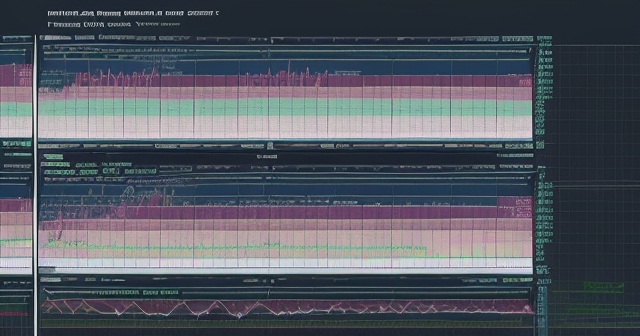
Identifying Support and Resistance is only the first step. The real value comes from using these levels to formulate actionable trading strategies. Support and Resistance provide clear reference points for planning entries, exits, and risk management. There are two primary approaches to trading with S&R: trading bounces and trading breakouts.
Trading Bounces (Range Trading)
This strategy involves anticipating that price will respect the Support or Resistance level and reverse direction, much like our bouncing ball analogy. This is often used in ranging or consolidating markets.
-
Buying at Support: If price is approaching a key Support level after a decline, traders anticipating a bounce might place buy orders near or slightly above the Support zone. The logic is that demand will absorb supply at this level, pushing the price back up.
Entry: Place a buy order as price reaches the Support zone, ideally waiting for a bullish confirmation signal (like a bullish candlestick pattern) forming at or near the Support.
Stop Loss: Crucially, place your stop-loss order just below the Support zone. If price breaks convincingly below Support, your thesis is likely wrong, and you want to exit the trade quickly to limit losses. This is where Support acts as a clear line in the sand for risk management.
Take Profit: Your initial take-profit target would typically be near the next Resistance level. This is where you anticipate selling pressure might increase, potentially causing price to reverse again.
-
Selling at Resistance: If price is approaching a key Resistance level after an advance, traders anticipating a reversal might place sell (short) orders near or slightly below the Resistance zone. The logic is that supply will overwhelm demand at this level, pushing the price back down.
Entry: Place a sell order as price reaches the Resistance zone, ideally waiting for a bearish confirmation signal (like a bearish candlestick pattern) forming at or near the Resistance.
Stop Loss: Place your stop-loss order just above the Resistance zone. If price breaks convincingly above Resistance, your thesis is likely wrong, and you need to exit. Resistance provides a clear risk boundary.
Take Profit: Your initial take-profit target would typically be near the next Support level. This is where you anticipate buying pressure might increase.
Trading bounces offers trades with potentially favorable risk-to-reward ratios because your stop loss is placed relatively close to your entry point, just beyond the identified level.
Trading Breakouts
Sometimes, price doesn’t bounce; it breaks through a Support or Resistance level with conviction. This can signal that the balance between buyers and sellers has decisively shifted and a new trend may be starting or an existing trend is resuming with strength. Trading breakouts involves entering a trade in the direction of the break.
-
Buying a Resistance Breakout: If price breaks convincingly above a Resistance level on strong volume (if volume data is available) or with large, bullish candles, it suggests buyers have overcome the selling pressure. The former Resistance can now potentially become new Support.
Entry: You can enter immediately on the break (aggressive) or wait for a retest of the broken Resistance level (now acting as Support) and look for a bullish confirmation (conservative). The retest offers a lower-risk entry with a tighter stop loss.
Stop Loss: Place your stop loss just below the newly broken Resistance level (or below the low of the retest candle). If price falls back below the broken level, it might be a false breakout.
Take Profit: Targets can be set at the next significant historical Resistance level, based on potential price projections from the breakout pattern, or using tools like Fibonacci extensions.
-
Selling a Support Breakout: If price breaks convincingly below a Support level on strong volume or with large, bearish candles, it suggests sellers have overwhelmed the buying pressure. The former Support can now potentially become new Resistance.
Entry: Enter immediately on the break (aggressive) or wait for a retest of the broken Support level (now acting as Resistance) and look for a bearish confirmation (conservative). The retest offers a lower-risk entry.
Stop Loss: Place your stop loss just above the newly broken Support level (or above the high of the retest candle). If price rises back above the broken level, it might be a false breakout.
Take Profit: Targets can be set at the next significant historical Support level, based on price projections, or using Fibonacci extensions.
Navigating False Breakouts
One of the trickiest aspects of trading breakouts is the possibility of false breakouts. A false breakout occurs when price briefly moves through a Support or Resistance level but then quickly reverses back into the previous range. These can trap traders who entered too early on the breakout.
To mitigate the risk of false breakouts:
- Wait for a candle to close decisively above Resistance or below Support, rather than entering immediately when price crosses the level.
- Look for increased volume accompanying the breakout (though this is less reliable in markets like Forex).
- Consider waiting for a retest of the broken level and entering if the level holds.
- Combine S&R with other confirmation tools, which brings us to our next point.
Enhancing S&R Strategy with Confluence and Confirmation
While Support and Resistance are powerful tools on their own, their effectiveness is significantly enhanced when combined with other technical analysis techniques. This process of using multiple signals that point in the same direction is called seeking confluence. Confluence increases the probability of a successful trade by providing additional confirmation for your S&R-based trade ideas.
Let’s explore how you can combine Support and Resistance with other tools:
Combining with Trendlines
We briefly touched upon dynamic Support and Resistance provided by trendlines. Combining horizontal S&R levels with trendlines can highlight particularly strong areas. For example, if a horizontal Support level coincides with a rising trendline, this area represents a double layer of potential buying pressure, making it a high-confluence zone for a long entry.
Conversely, a horizontal Resistance level meeting a falling trendline indicates a strong area of potential selling pressure. Trading signals that occur where trendlines and horizontal S&R levels intersect often have higher probabilities of success.
Combining with Moving Averages
Moving Averages (MAs) are often used as dynamic Support or Resistance. When price is in an uptrend, a key MA (like the 50, 100, or 200-period MA) can act as Support, with price bouncing off it. In a downtrend, the MA can act as Resistance, with price falling away from it.
If a horizontal Support level also coincides with a major Moving Average, this significantly strengthens the perceived Support. Similarly, a Resistance level aligned with a major MA becomes a stronger barrier. Look for price action signals forming at these confluent areas.
Combining with Oscillators (e.g., RSI)
Oscillators like the Relative Strength Index (RSI) can be used to confirm potential bounces off Support or reversals from Resistance.
- If price is approaching a Support level and the RSI is simultaneously showing oversold conditions (typically below 30), it adds weight to the idea that a bounce is likely due to exhausted selling pressure.
- If price is approaching a Resistance level and the RSI is simultaneously showing overbought conditions (typically above 70), it adds weight to the idea that a reversal is likely due to exhausted buying pressure.
Divergence between price and an oscillator at S&R levels is an even stronger confirmation signal. Bullish divergence at Support or bearish divergence at Resistance suggests that the momentum supporting the current trend is weakening, making a reversal more probable.
Combining with Candlestick and Price Action Patterns
One of the most powerful confirmation techniques is to look for specific candlestick or price action patterns forming directly *at* a Support or Resistance level. These patterns often signal the battle between buyers and sellers at that critical juncture.
Examples include:
-
Pin Bars: A Pin Bar (or Hammer/Hanging Man) at Support with a long lower wick suggests rejection of lower prices and potential buying pressure entering. A Pin Bar at Resistance with a long upper wick suggests rejection of higher prices and potential selling pressure entering.
-
Engulfing Patterns: A Bullish Engulfing pattern at Support strongly indicates that buyers have taken control. A Bearish Engulfing pattern at Resistance strongly indicates that sellers have taken control.
-
Inside Bars: An Inside Bar at a key S&R level can signal consolidation and potential breakout soon, often used with other signals for direction.
-
Fakey Patterns: A Fakey is essentially a false breakout of an Inside Bar structure. If a Fakey pattern forms at a key Support or Resistance level, it can be a powerful signal of a failed attempt to break the level, indicating that the original level is likely to hold and price will reverse.
| Pattern | Significance |
|---|---|
| Pin Bars | Indicate rejection of price levels, suggesting potential reversals. |
| Engulfing Patterns | Show a shift in control between buyers and sellers near S&R levels. |
| Inside Bars | Signal consolidation, often precede breakouts at established S&R. |
| Fakey Patterns | Indicate false breakouts, suggesting a strong likelihood of price reversal. |
Finding a strong price action signal forming precisely at a well-identified Support or Resistance zone, potentially also coinciding with a trendline or MA, creates a high-confluence trading setup. This confluence provides greater conviction in your trade idea.
Support Becomes Resistance, and Resistance Becomes Support
A fundamental concept in technical analysis is the principle of polarity change. When a significant Support or Resistance level is decisively broken, it often flips its role.
-
Broken Resistance Becomes Support: Once price breaks convincingly above a Resistance level, that level is no longer acting as a ceiling preventing further upward movement. Instead, it often transforms into a new Support level. When price eventually pulls back (retests) to this level, traders who missed the initial breakout may look to buy, and traders who sold short before the breakout may look to cover their positions. This former Resistance now acts as a floor.
-
Broken Support Becomes Resistance: Similarly, when price breaks convincingly below a Support level, that level is no longer acting as a floor preventing further downward movement. It often transforms into a new Resistance level. When price eventually rallies back up (retests) to this level, traders who missed the initial breakdown may look to sell, and traders who bought before the breakdown may look to exit their positions at breakeven or with minimal loss. This former Support now acts as a ceiling.
Understanding this polarity change is crucial for trading breakouts and planning subsequent trades. A retest of a broken S&R level (where the level flips roles) often provides a lower-risk entry opportunity compared to entering on the initial breakout.
Applying Support and Resistance Across Different Markets
The beauty of Support and Resistance is that these principles are universal across various financial markets, including Forex, Stocks, Commodities, and even Cryptocurrencies. This is because they are based on the fundamental dynamics of supply, demand, and human psychology, which are present in all markets where buyers and sellers interact freely.
-
Forex (Foreign Exchange): In the Forex market, pairs like EUR/USD, GBP/USD, or AUD/USD constantly create and respect Support and Resistance levels across various timeframes. Major psychological levels like parity (1.0000), previous swing highs/lows from daily or weekly charts, and round numbers (e.g., 1.1000, 0.9500) are frequently watched S&R zones. Trading Forex often involves reacting quickly to price action at these levels due to the market’s high liquidity and 24/5 nature. If you’re exploring Forex trading or interested in CFDs, platforms like Moneta Markets are worth considering. Based in Australia and offering over 1000 instruments, they cater to traders of all levels.
-
Stocks: Individual stocks also display strong Support and Resistance based on previous highs and lows, IPO prices, significant news events, and earnings reports. Institutional buying and selling can create powerful S&R levels. For example, a stock that repeatedly bounces off $50 is demonstrating strong Support at that level.
-
Commodities: Markets like Gold (XAU/USD), Silver, Oil, and other commodities also adhere to S&R principles. Factors like production costs, global supply/demand dynamics, geopolitical events, and currency strength influence these levels, but their identification and trading based on historical price action remain consistent.
-
Cryptocurrencies: Despite their volatility, cryptocurrencies like Bitcoin and Ethereum also exhibit Support and Resistance behavior based on previous peaks, troughs, and significant adoption milestones. The psychological aspect is particularly strong in crypto markets.
Regardless of the market you trade, the core concepts and identification methods for Support and Resistance remain the same. You analyze historical price, look for areas where price reversed or paused, and use those as reference points for future trading decisions.
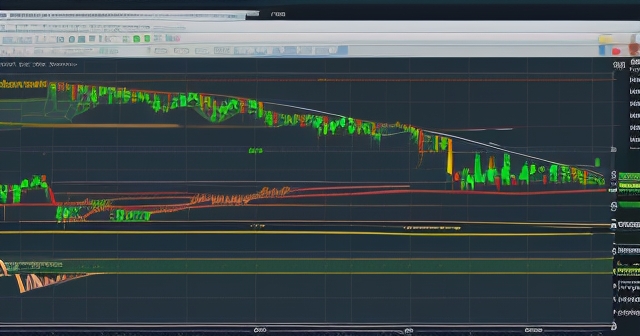
In choosing a trading platform, consider the tools it offers to help you identify and trade S&R. Platforms like MT4, MT5, and Pro Trader, often supported by brokers like Moneta Markets, provide charting tools necessary for drawing horizontal lines, trendlines, and applying indicators to help you pinpoint these key levels accurately. High-speed execution and low spreads on these platforms can also be beneficial when trading around tight S&R zones.
Integrating S&R into Your Trading Plan
Successful trading isn’t just about identifying potential entries; it’s about having a complete plan that includes risk management and exit strategies. Support and Resistance levels are fundamental components of a solid trading plan.
-
Defining Risk: As discussed, S&R levels provide clear points for setting stop-loss orders. Knowing exactly where you will exit a trade if it goes against you based on a level being broken is the first and most important step in risk management. You can calculate your potential loss per share or per pip before entering the trade, allowing you to size your position appropriately.
-
Setting Targets: The next significant Support or Resistance level in the direction of your trade serves as a logical target for taking profits. While other methods like Fibonacci extensions or fixed risk-to-reward ratios can also be used, S&R levels are natural resting places where price might encounter opposition.
-
Entry Confirmation: Instead of blindly entering at a level, use S&R as the *location* for your entry signal. Wait for a confirmation candle, a price action pattern, or a confluence with an indicator at the S&R level before pulling the trigger. This patience can help you avoid premature entries or false signals.
-
Contextual Awareness: Always consider the broader market context. Are you trading S&R in a strong trend or a choppy range? Is the level you’ve identified a major, multi-year level, or a minor level from an intraday chart? Stronger, longer-term S&R levels tend to be more reliable.
Building a trading plan around Support and Resistance means clearly defining:
- Which S&R levels are significant?
- What specific signal will trigger an entry at that level?
- Where will your stop-loss be placed relative to the level?
- Where is your initial target for taking profit?
- How will you manage the trade if price breaks the level or consolidates?
Having these questions answered before you enter a trade dramatically improves discipline and consistency.
Limitations and Challenges of Support and Resistance
While incredibly useful, Support and Resistance analysis is not a guaranteed crystal ball. There are limitations and challenges you need to be aware of:
-
Subjectivity: Identifying S&R can be subjective. One trader might draw a level slightly differently than another based on which swing points or wicks they prioritize. This is why viewing them as zones rather than lines is helpful.
-
False Breakouts: As mentioned, fakeouts are common and can lead to losing trades if not managed properly. Waiting for confirmation is key but can mean missing some moves.
-
Breaking Strong Levels: Sometimes, major news events (like central bank interest rate decisions, employment reports, or geopolitical shocks) or unexpected shifts in sentiment can cause price to blast through seemingly strong S&R levels with little hesitation. S&R analysis works best under ‘normal’ market conditions.
-
Over-Reliance: Relying solely on S&R without considering other factors like the overall market trend, momentum, or fundamental news can lead to poor decisions. Confluence with other tools is vital.
-
Dynamic Nature: S&R levels change over time. What was once strong Support might weaken or break, turning into Resistance. You must constantly update and reassess the relevance of your identified levels as price action unfolds.
Being aware of these challenges is part of becoming a skilled trader. It’s not about finding a perfect system but about understanding the tools at your disposal and how to use them effectively while managing their inherent limitations.
Practice and Patience: Mastering S&R Identification
Identifying significant Support and Resistance levels accurately takes practice. Don’t expect to get it perfectly right on your first few attempts. Here’s how you can improve:
-
Start Simple: Begin by identifying the most obvious, significant swing highs and lows on longer timeframes (like daily or weekly charts). These are typically easier to spot and often represent stronger levels.
-
Focus on Recent Price Action: While historical levels are important, recent Support and Resistance formed by recent price action are often more immediately relevant.
-
Draw Zones, Not Lines: Get into the habit of drawing Support and Resistance as zones (rectangles) on your charting platform rather than single lines. This acknowledges the natural variability of market price movement.
-
Backtest: Look at historical charts and practice identifying S&R levels *before* you see the price action that occurred after they were formed. Then, observe how price reacted to those levels. Did it bounce? Did it break? Was there a retest?
-
Review and Refine: Regularly review your charts and the S&R levels you’ve drawn. Did price respect them? Did they break? Why or why not? Adjust your drawing technique based on what you observe.
-
Use Multiple Timeframes: Identify major S&R levels on longer timeframes (e.g., weekly, daily) and then refine your analysis and look for entry signals on shorter timeframes (e.g., 4-hour, 1-hour) around those major levels.
Patience is your ally. Wait for price to come to your identified key levels. Don’t chase trades in the middle of a range where S&R is unclear. The highest probability trading opportunities often occur when price interacts directly with a strong Support or Resistance zone.
For those looking for a trading partner, finding a brokerage that offers robust charting tools and educational resources can significantly aid your practice. If you’re seeking a regulated broker for global trading, Moneta Markets holds multiple licenses (like FSCA, ASIC, FSA) and provides features such as segregated client funds and 24/7 support, which can provide peace of mind as you practice applying these complex concepts.
Conclusion: Building Your Technical Trading Foundation
You’ve now taken a significant step towards mastering technical analysis by diving deep into the concepts of Support and Resistance. We’ve learned that these are not merely lines on a chart, but crucial price levels representing historical battlegrounds between buyers and sellers, influenced profoundly by market psychology.
We’ve explored how to identify these levels using historical price action, swing points, trendlines, and even technical indicators, emphasizing the value of viewing them as zones. We’ve discussed the critical role of human emotion – fear, greed, and memory – in giving these levels their power.
Most importantly, we’ve detailed how to translate this understanding into practical trading strategies, from trading bounces within ranges to capitalizing on breakouts, all while highlighting the absolute necessity of setting stop losses just beyond these levels for effective risk management. We also stressed the importance of seeking confluence by combining S&R analysis with other tools like price action patterns and indicators to increase trade probability and avoid false signals.
Remember the principle of polarity – how broken Support often becomes new Resistance, and vice versa – a vital concept for planning follow-up trades after a breakout.
Mastering Support and Resistance is fundamental to understanding price action and developing a robust technical trading approach. It provides clarity on where price might stop, reverse, or accelerate, and gives you concrete reference points for managing risk and planning your trades.
Like any skill, proficiency in identifying and trading S&R levels requires practice, patience, and continuous learning. By consistently applying these principles to your charts and analyzing past price behavior, you will sharpen your eye and improve your trading intuition.
We’ve covered the essential building blocks. Now it’s your turn to put this knowledge into practice. Start analyzing charts with a new perspective, seeing the story the market is telling through the interaction of price with these crucial Support and Resistance levels. This foundational knowledge is a powerful asset on your trading journey.
support resistance strategyFAQ
Q:What are Support and Resistance levels?
A:Support and Resistance levels are price points on a chart where buying or selling pressure is expected to halt or reverse a trend, acting as barriers to price movement.
Q:How can I identify Support and Resistance on a chart?
A:You can identify Support and Resistance by looking for historical price levels where price has reversed, consolidated, or has shown significant buying or selling interest.
Q:What is the significance of round numbers in trading?
A:Round numbers often act as psychological Support and Resistance levels as traders tend to place orders around these easily remembered price points.
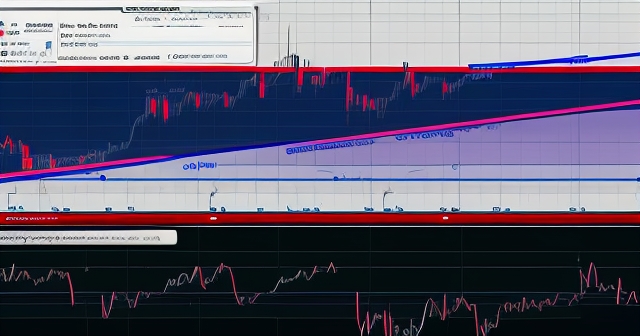
留言